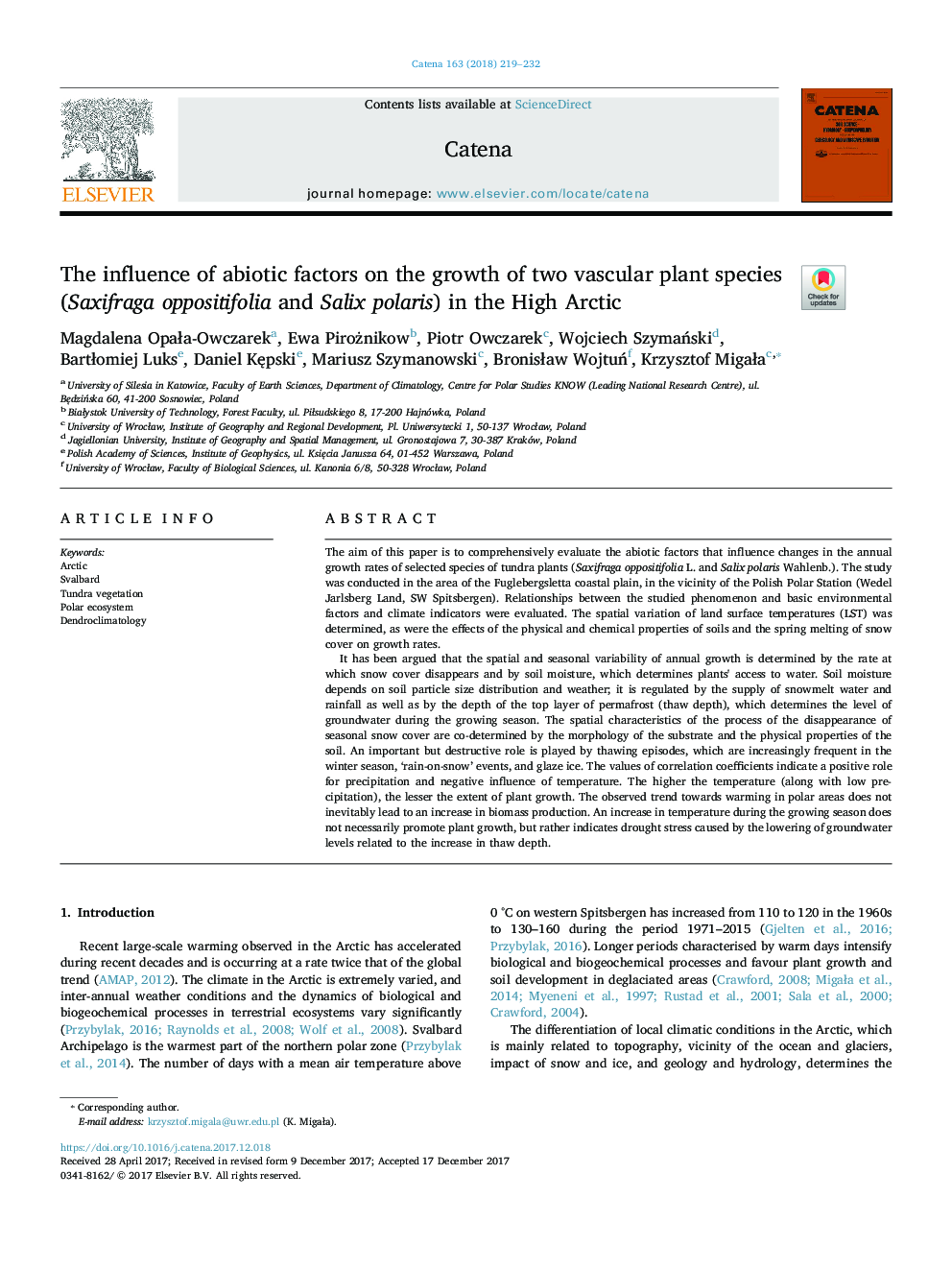| Article ID | Journal | Published Year | Pages | File Type |
|---|---|---|---|---|
| 8893694 | CATENA | 2018 | 14 Pages |
Abstract
It has been argued that the spatial and seasonal variability of annual growth is determined by the rate at which snow cover disappears and by soil moisture, which determines plants' access to water. Soil moisture depends on soil particle size distribution and weather; it is regulated by the supply of snowmelt water and rainfall as well as by the depth of the top layer of permafrost (thaw depth), which determines the level of groundwater during the growing season. The spatial characteristics of the process of the disappearance of seasonal snow cover are co-determined by the morphology of the substrate and the physical properties of the soil. An important but destructive role is played by thawing episodes, which are increasingly frequent in the winter season, 'rain-on-snow' events, and glaze ice. The values of correlation coefficients indicate a positive role for precipitation and negative influence of temperature. The higher the temperature (along with low precipitation), the lesser the extent of plant growth. The observed trend towards warming in polar areas does not inevitably lead to an increase in biomass production. An increase in temperature during the growing season does not necessarily promote plant growth, but rather indicates drought stress caused by the lowering of groundwater levels related to the increase in thaw depth.
Keywords
Related Topics
Physical Sciences and Engineering
Earth and Planetary Sciences
Earth-Surface Processes
Authors
Magdalena OpaÅa-Owczarek, Ewa Pirożnikow, Piotr Owczarek, Wojciech SzymaÅski, BartÅomiej Luks, Daniel KÄpski, Mariusz Szymanowski, BronisÅaw WojtuÅ, Krzysztof MigaÅa,
